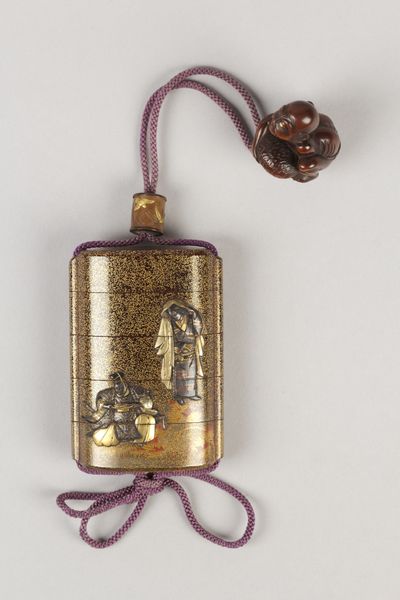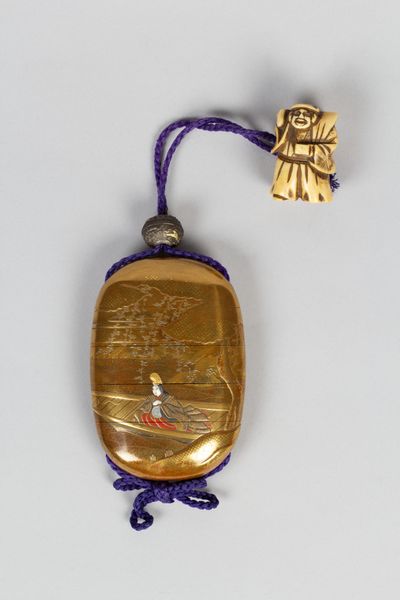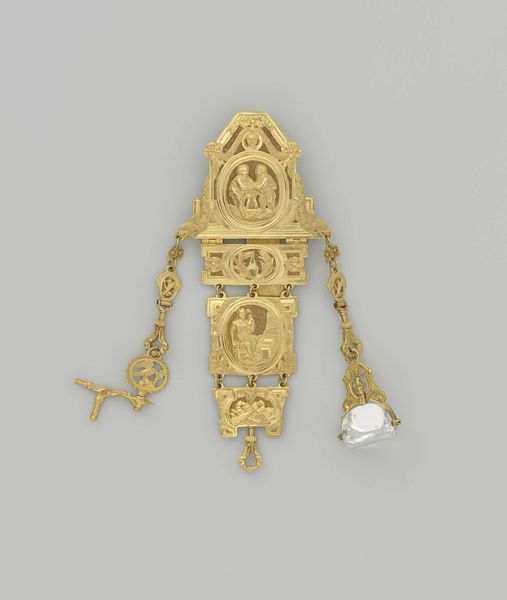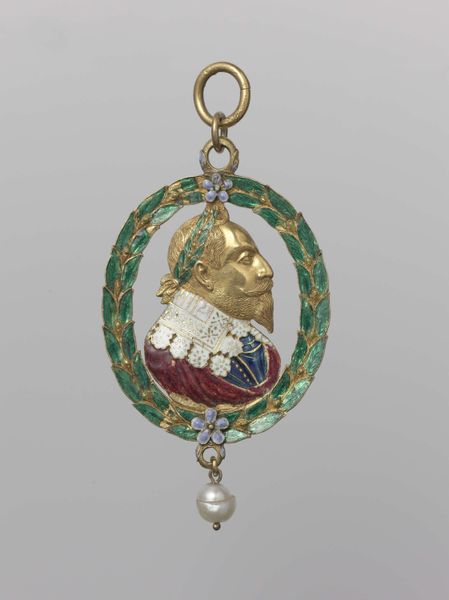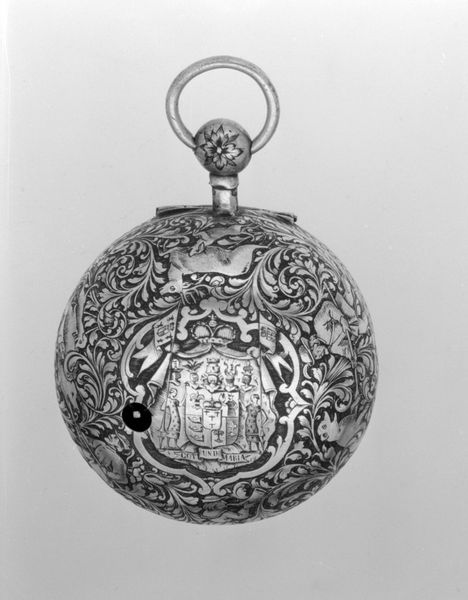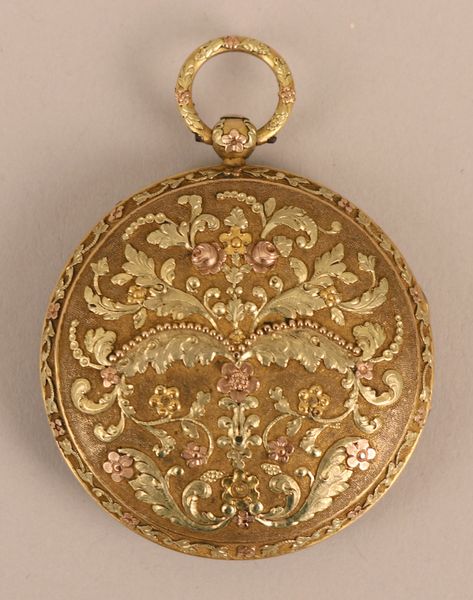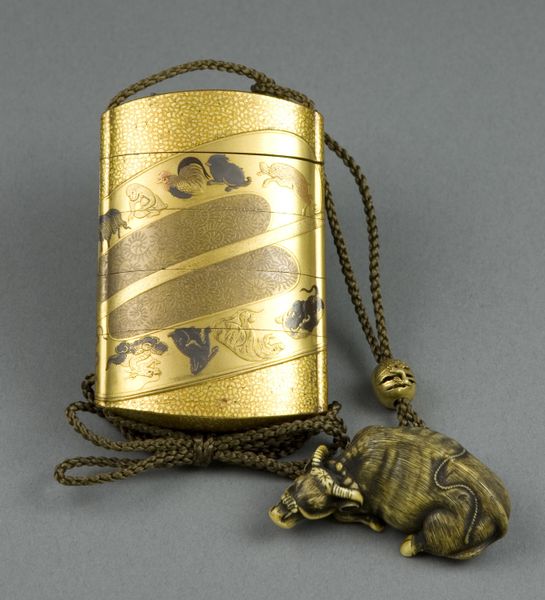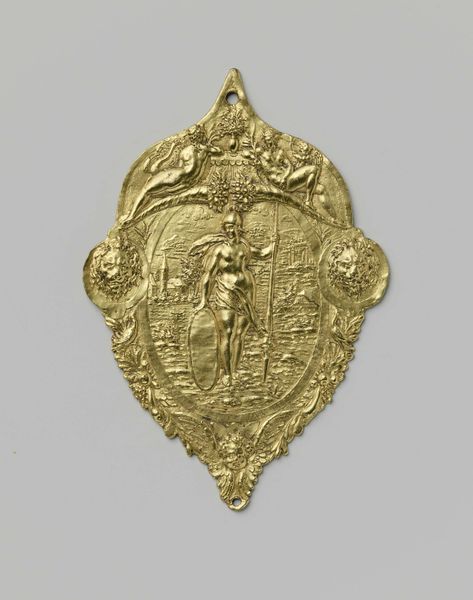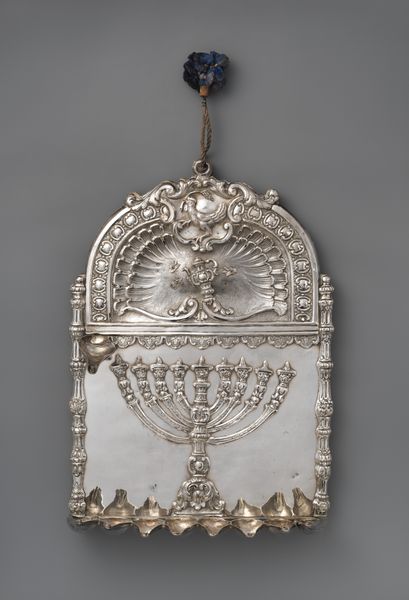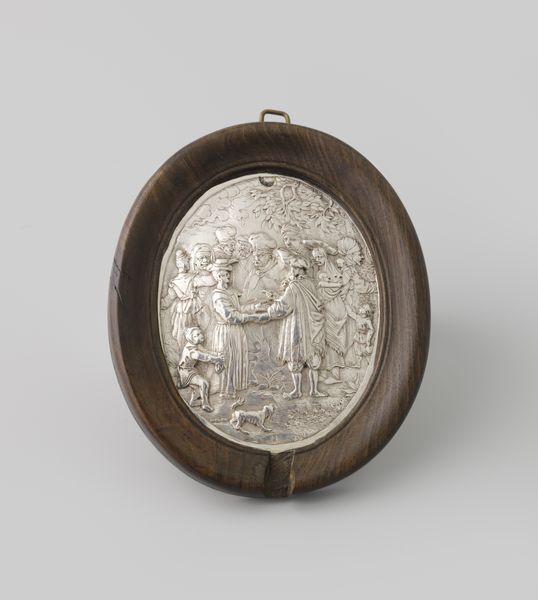
etching
#
etching
#
asian-art
#
orientalism
#
decorative-art
Dimensions: height 9.0 cm, width 5.5 cm, depth 2 cm
Copyright: Rijks Museum: Open Domain
Curator: Here we have an Inro by Shibayama Shokasai, crafted somewhere around 1800 to 1825. Editor: The luminosity is immediate; it strikes me as exuding refinement. The scene rendered is minimal, almost tranquil. What are we looking at exactly, contextually? Curator: The Inro served as a container for small personal items, and this example is embellished with an etching of figures within a serene landscape setting. Its function evolved with fashion, from practical necessity to a status symbol within Japanese society. Editor: Interesting, if we scrutinize how the figures are positioned, the balance in color and form really enhances this impression. Can you elaborate more on this composition, Curator? Curator: Notice how the forms nestle in clouds and fine lines implying sky. The figures and attendants, though miniature, narrate the landscape and the cultural relevance it had as more and more became consumers of these decorative treasures. These containers are both private and meant for the public sphere. Editor: A telling remark; it becomes very apparent if we analyze who and how and why the creation of the item in question serves its contemporary role in society. In our society, its display as a collectible artifact. Curator: Precisely! And don't disregard the texture as the material tells stories too; the gleam is enticing but consider also that the artist’s skill has transcended use to now convey status and craftsmanship to contemporary eyes as you noted previously. Editor: It's quite remarkable how this miniature work, through its material choices, line qualities, and representational values, transcends its initial utilitarian purpose. A very illuminating point from an object meant to contain small objects, don’t you agree? Curator: I concur! By observing its intrinsic artistic elements in parallel to its historic importance and sociocultural context we can have a broader understanding of this exquisite object.
Comments
rijksmuseum over 2 years ago
⋮
Minamoto no Yoritomo was the first shogun of Japan. Officially designated as such in 1192, he is often portrayed in the decorative arts as someone who, after his appointment, led a life of luxury while others were hard at work. He is depicted here sitting under a parasol watching cranes forced to fly in a race along the coast for his entertainment.
Join the conversation
Join millions of artists and users on Artera today and experience the ultimate creative platform.
